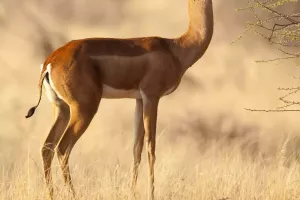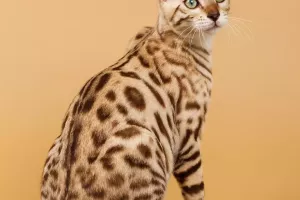The red-crowned crane is a kind of crane, a large wading bird with a body length of 120-160 cm. The name of the red-crowned crane can be said to describe its appearance perfectly. The most typical feature of this crane is that there is a piece of bare red skin on the top of the head, which looks like a hat, so it naturally gets the name of the red-crowned crane.
Red-crowned cranes are distributed in Japan, South Korea, North Korea, Mongolia and other places. Red-crowned cranes mainly breed in Hokkaido, Japan, and overwinter in Japan and Korea.
The size of the red-crowned crane is determined by its habits. As a typical wading bird, the red-crowned crane usually lives mainly in wetlands and shallow water, and its long legs allow it to move freely. Moreover, their long mouths and necks allow them to easily get the food they need.
The red-crowned crane is not completely white and flawless. It has black patches on the ends of its wings, cheeks, neck and other parts, and some black feathers on the end of its tail. Although the red-crowned crane also has a slender mouth and legs, its mouth is mostly gray-green, the tip is bright yellow, and the toes are mostly gray-black. These are subtle differences from other cranes.
Like most cranes, red-crowned cranes like to live in areas with abundant water, such as wetlands, swamps, tidal flats, reeds, river banks and other environments. During winter, they are always walking and foraging in groups. Sometimes red-crowned cranes can have as many as fifty members. Usually they mainly catch some aquatic animals to eat, and sometimes eat the roots, leaves and buds of some aquatic plants.
Red-crowned cranes generally enter the breeding season in late spring and early summer. When red-crowned cranes enter the breeding season, they will dance on the snow to attract the opposite sex. Red-crowned cranes generally dance around sunrise. This is not only an important time for crane courtship, but also the best time for us to watch crane dance. Generally speaking, when male cranes and female cranes dance together for a period of time, they will go with the flow and breed the next generation of cranes together.
Red-crowned cranes require a very clean wetland environment. However, in recent years, due to frequent human activities, the expansion of cities and farmland, and the increase in global temperature, the wetland area on the earth has been continuously reduced, so the population of red-crowned cranes has become less and less. Even in a red-crowned crane migration place like Japan, there are no wild red-crowned cranes.
Residents of East Asia use red-crowned cranes to symbolize happiness, auspiciousness, longevity and loyalty. Red-crowned cranes also appear frequently in literary and artistic works of various countries. The red-crowned crane can live up to 60 years and is a very long-lived bird. However, at the beginning of this century, the habitat loss caused by human activities made their number less than 1,000. They have been included in the "World Conservation Union" and are also included in the first-class protected animals of the "Washington Convention".


